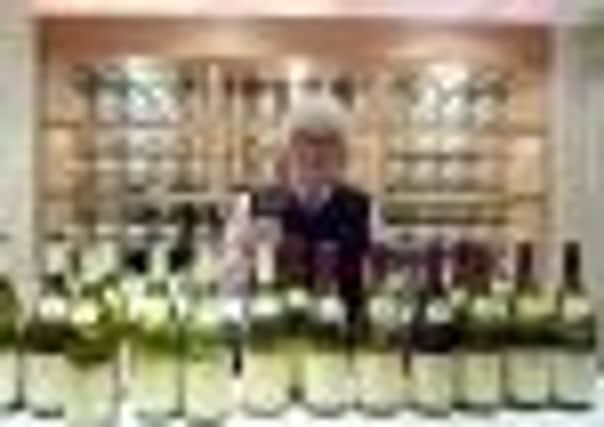Verbal remedies


It has always been difficult to keep up with Jacques. Not only does he speak very quickly in half-broken English but he scatters his conversations with almost-words that take some thinking about while his hands wave around, emphasising each point. After a while, you get carried away with his sheer enthusiasm and tune into his way of thinking, where the earth, the rock, the sun and the rain are all linked into producing great wine. The only problem is that it is impossible to take notes that make any kind of sense.
The first time I met him, he was in his cellar in Beaune and I was being allowed to taste the wines in cask. With a glass sampling pipette in hand, he darted from cask to cask, pouring a little of each wine into my glass and explaining the difference in flavour between one wine and the next, between vineyards and villages. The taste of each wine was accompanied by a stream of information; the soil, the slope, the way the water runs down the hill and exposure of the vines to the sun. The descriptions of flavour hardly seemed to mention fruit, but energy came into the conversation a lot. Energy from the rock, the soil and the sun and the way it flows into the grape and from grape to glass. Those wines in cask shone with individuality and character, despite their youth.
Advertisement
Hide AdAdvertisement
Hide AdIt is this kind of knowledge and above all, passion, which has gone into Jadot wines for 40 years. Starting out as an assistant oenologist in 1970, Jacques Lardière progressed to technical director, responsible for overseeing the production of dozens of different wines from Chablis to Beaujolais including wines from the very best vineyards of the Cote d’Or.
Jadot is an established négotiant, with control over large swathes of Burgundy, including a high proportion of Premiers and Grands Crus. There was a time when négotiant Burgundy was a melting pot for wine, where blending down to a consistent style was more important than making wines with personality. But that is where Jadot has triumphed. Under Jacques’ individual winemaking direction, the identity of each wine has developed so that Jadot now has a portfolio of distinctive, elegant well-made wines. “I like to macerate the grapes for a long time at higher temperatures to allow the wine to express its sense of place,” said Jacques, “and these wines can age well.” He then went on a verbal ramble about energy, molecular fixing and the way a wine can digest its own flavours and I started to wonder whether I should have paid more attention in French lessons at school.
The Jadot vineyards are largely organic, certainly no weed killers are used and many vineyards are farmed biodynamically, where the influence of the moon and the stars plays a part in the overall working of the vines. Whether this actually has any kind of effect on the energy, flavour or balance of a wine is still open to debate, but I often find that the flavours in biodynamic wines are more, lively, vibrant and clear.
But the proof of Jacques’ work was in the range of wines presented to show his 40 years of winemaking.
Advertisement
Hide AdAdvertisement
Hide AdWith six different vintages of Corton Charlemagne Grand Cru and Beaune 1er Cru lined up in front of me I explored the range of tastes and the way these grand wines had aged. The Corton was extraordinary. 1974 was a difficult year with poor summer weather but one of the three bottles poured that evening was fabulous with deep, waxy, glorious nutty fruit - elegant and balanced. The wines changed with the vintage, showing apricots in the 1988, nuts and minerals in 1993 and honeysuckle in 2008. There was another palette of flavours in the red Beaune 1er Cru – cherries, strawberries, minerals and the earthy notes of a forest floor, all striking a chord and identifying the year.
So after 40 years in the job, what will Jacques do, and perhaps more importantly, what will Jadot do?
At Jadot the winemaking succession is in place in the form of Fredéric Barnier who has been working alongside Jacques for three years. He is an established winemaker but I sense that he is not about to make dramatic changes. he said. “It is most important to have confidence in the power of the place than in the techniques of the winemaker.” Fredéric speaks English without making words up and he doesn’t wave his arms around but he seems to have the same kind of passion for Burgundy and its individuality as Jacques so it appears that the quality and personality of Jadot wines are in safe hands.
And Jacques Lardière will still be available, in a consultancy role, to keep an eye on those wines and their energies.
Advertisement
Hide AdAdvertisement
Hide AdJadot wines are widely available. Waitrose has the juicy, cherry and berry-packed Combe-aux-Jacques Beaujolais 2011 (£9.99) and the gently buttery, citrus and melon Mâcon-Azé (£9.99).
The Majestic range includes a fresh-tasting raspberry and redcurrant style Mâcon Rouge 2010) down to £7.99 on multibuy until February 4) and a great value Mâcon Villages Blanc, also at £7.99 on multibuy.
Jadot produces The Wine Society’s Exhibition Monthélie 2009 (£17.50) while more expensive wines from the range crop up in independent wine shops or on quality wine lists.